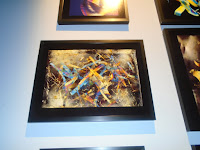This course actually exceeded my expectations by a lot. I am a totally inexperienced artist that took this course as a requirement for IF. I expected that it would be a struggle and that I would not get much enjoyment or learning out of it. I was wrong.
I would define art as an expression of one's unique vision that may take a variety of forms. My initial definition was not totally off base. What I took away from the ability to analyze the different forms mentioned in my new definition.
Who was your favorite artist in your original posting and who is your favorite visual artist now? If there is a difference, why do you think so? If you have the same favorite artist, why do you think so?
My favorite artist in my original blog was Banksy. I still appreciate this artist, however, my knowledge and exposure was broadened a great deal! I now appreciate artists such as Frida Kahlo as being favorites.
I enjoyed taking this course online. Submitting my work online was less intimidating for me. I also liked the ability to manage time as it fit my unique needs and schedule. There was such a great variety of assignments in this course. Im not sure that could have been achieved in a classroom.
















